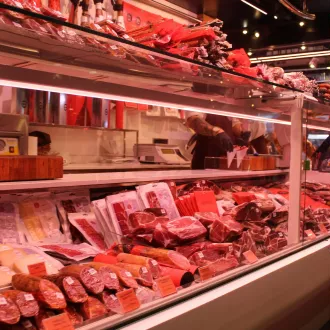ByOnlinecourses55

Strategies avoid cross contamination gluten - nutrition celiac
Cross-contamination with gluten is a significant risk for people with celiac disease or gluten sensitivity. Even small amounts of gluten can cause uncomfortable symptoms and damage to the intestine. Therefore, it is crucial to follow effective strategies to prevent gluten from mixing with gluten-free foods. In this post, we will explore how to minimize the risk of cross-contamination in different contexts.
One of the first steps to avoid cross-contamination is to use separate cookware for gluten-containing and non-gluten-containing foods. This includes knives, spoons, forks, cutting boards and pans. It is advisable to have a set of utensils specifically for preparing gluten-free meals. Also, wash all utensils and surfaces thoroughly after use to remove any traces of gluten.
Proper food storage is critical to prevent cross-contamination. Store gluten-free foods in airtight containers and be sure to label them clearly. Also, keep gluten products on separate shelves or in the back of cabinets to avoid accidental contact.
Always read product labels before purchasing products. Look for terms such as "contains gluten" or "may contain traces of gluten." Also, check ingredients for possible sources of gluten. When in doubt, check with the manufacturer for more information about the manufacturing process.
Appliances such as toasters, food processors and blenders may retain traces of gluten if used to prepare gluten-containing foods. Consider having appliances that are dedicated to gluten-free foods. If this is not possible, be sure to thoroughly clean appliances before using them to prepare gluten-free foods.
When preparing gluten-free foods, make sure cooking surfaces are thoroughly cleaned. Use parchment paper or aluminum foil to line surfaces if necessary. Also, avoid simultaneous preparation of gluten-free and gluten-containing foods to minimize the risk of contamination.
It is vital that all family members and kitchen staff are educated on the importance of avoiding gluten cross-contamination. Organize training sessions on safe practices and make sure everyone understands the strategies and procedures for handling gluten-free foods.
When shopping for foods, opt for brands and products that are certified gluten-free. This reduces the risk of cross-contamination during the manufacturing and packaging process. Also, avoid buying from stores that do not have rigorous gluten handling practices.
Finally, constantly monitor your practices and make adjustments as needed. Cross-contamination can occur in many ways, and it is important to be aware of new sources of risk and adjust your strategies to maintain a gluten-free environment.
By following these key strategies, you can significantly reduce the risk of gluten cross-contamination and ensure a safe environment for those who need to avoid gluten. For more tips and resources on gluten-free food handling, explore our specialized courses.